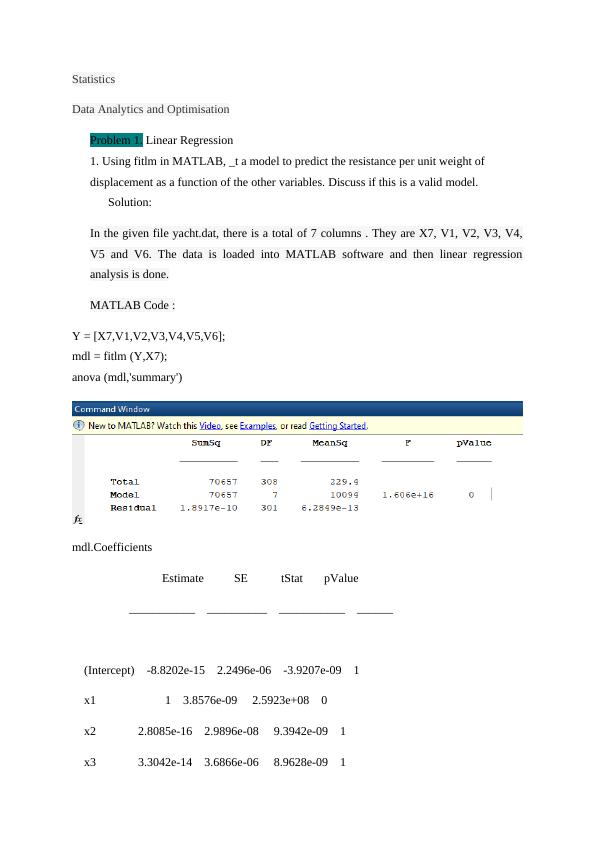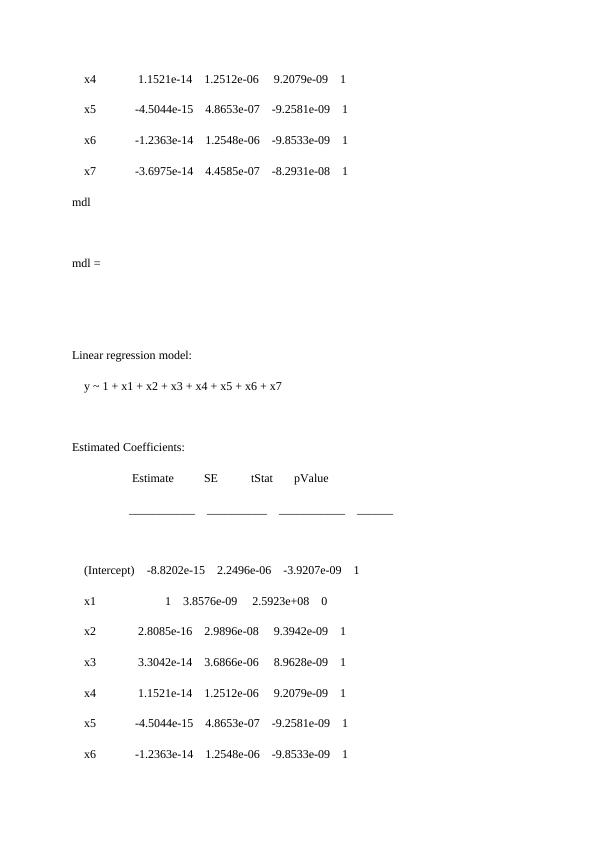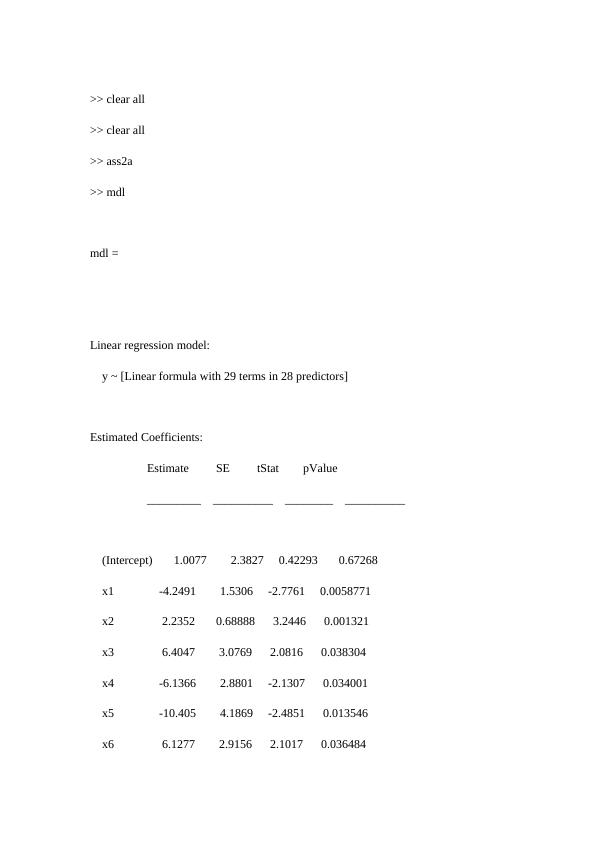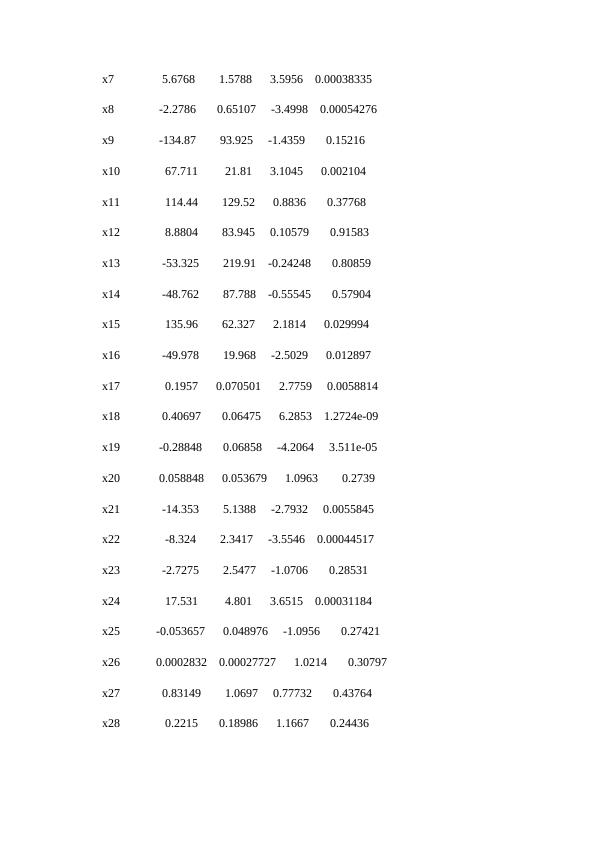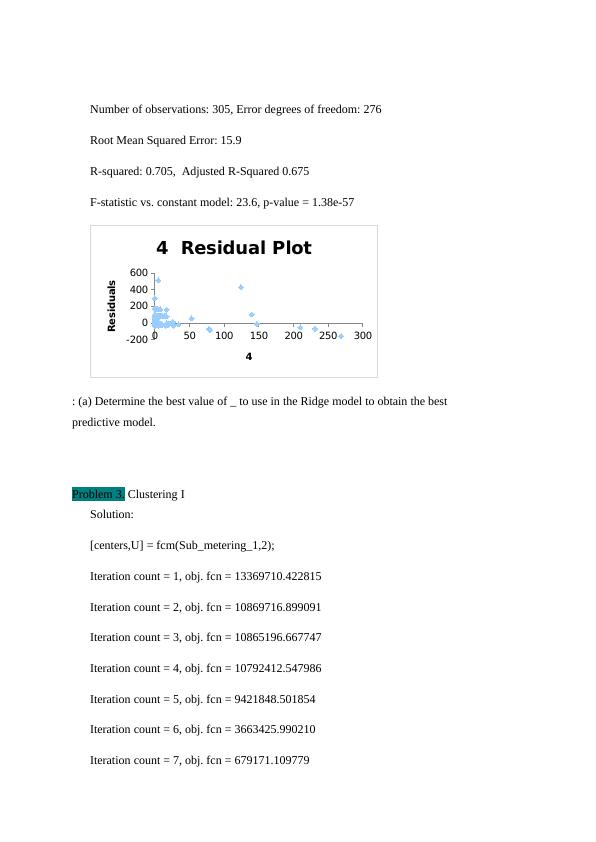Linear Regression Model for Resistance per Unit Weight of Displacement
Complete four questions for ENN543 Assignment 1, worth 25% of the overall subject grade, using data provided on Blackboard. Submit answers in a single document and upload to TurnItIn.
106 Pages14401 Words57 Views
Added on 2022-11-29
About This Document
This document explains how to use fitlm in MATLAB to create a linear regression model for predicting the resistance per unit weight of displacement. It discusses the validity of the model and suggests ways to improve it. The document also includes information on regularized regression and clustering techniques.
Linear Regression Model for Resistance per Unit Weight of Displacement
Complete four questions for ENN543 Assignment 1, worth 25% of the overall subject grade, using data provided on Blackboard. Submit answers in a single document and upload to TurnItIn.
Added on 2022-11-29
ShareRelated Documents
End of preview
Want to access all the pages? Upload your documents or become a member.
Linear Regression Analysis and Optimization
|128
|10906
|309
Assignment on econometrics PDF
|28
|4390
|481
Design Optimisation for Manufacturing
|10
|1615
|51
Cox Proportional Hazards Model for Survival Analysis
|6
|876
|350
Assignment 2
|16
|2136
|384
Marketing Research, Fall 2016.
|2
|281
|451

